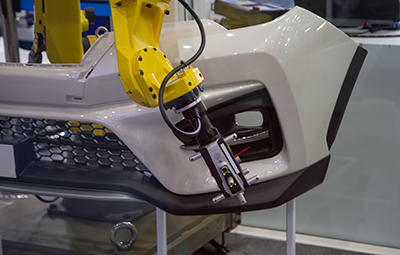Is Robotic Laser Metrology the Right Inspection Process for You?

Robotic laser metrology is revolutionizing the way industries approach quality control and part inspection. This advanced technology combines a six-axis robotic arm with high-precision laser radar systems, delivering unmatched speed, accuracy, and efficiency. Whether you're in automotive, aerospace, defense, or any other high-precision manufacturing sector, this innovation could be a game-changer for your operations.
Traditionally, inspection processes have been labor-intensive, time-consuming, and prone to human error. By integrating robotic laser metrology, companies are now able to streamline their workflows, reduce bottlenecks, and achieve consistent, reliable results. It's not just about automation—it's about transforming how inspections are conducted at every stage of production.
Laser Metrology Solves Inspection Woes
Introducing a robotic system equipped with a laser metrology head can address many of the challenges faced in traditional inspection methods. From reducing manual workload to minimizing errors, these systems help manufacturers stay competitive in an increasingly automated world. The key is identifying where the process is slowing down and where automation can make the most impact.
If you're considering implementing robotic laser metrology, it’s wise to start small. Before making a large investment, testing one task at a time allows you to evaluate performance, understand limitations, and build confidence in the technology. This gradual approach helps ensure a smooth transition into full-scale automation.
Common signs of a bottleneck in your inspection process include delays, reduced throughput, and increased wait times. These issues often go unnoticed until they begin affecting output and quality. A detailed analysis of each step in your process can reveal where automation would bring the most value.
Do You Need a Laser Metrology Robot?
If you're wondering whether robotic laser metrology is right for your facility, here are five steps to guide your decision-making process:
- Break down your inspection process. Start by analyzing each step of your current inspection routine. Some tasks may be ideal for automation, while others may require more hands-on attention.
- Define the data you collect. Different stages of inspection involve various types of data. Understanding what data is critical will help determine which parts of the process can benefit from robotic automation.
- List your tools and equipment. Not all devices used in inspection are compatible with robotic systems. Take stock of what you use and identify which tools can be integrated with automation.
- Assess your tasks. While robots excel at positioning sensors or loading parts into testing machines, they aren’t suited for every type of task. Evaluate which activities are best left to human operators.
- Pick the right task to automate first. After going through the previous steps, you’ll have a list of potential automation candidates. Choose the one that offers the highest return on investment and test it thoroughly before scaling up.
By taking these steps, you can make an informed decision about whether robotic laser metrology is the right fit for your operation. If you're unsure, reaching out to experts like Genesis Systems can provide valuable insights and support throughout the implementation process.
Discover how a Genesis laser metrology solution can transform your inspection workflow and improve overall efficiency. Contact us today to learn more about how automation can benefit your business.
Posted in Uncategorizedhot work tool steel,hot work steels,hot work die steel,hot die steel h13
Jiangyou ChongxinSpecial Metal Materials Co., Ltd. , https://www.zhongxindiesteel.com